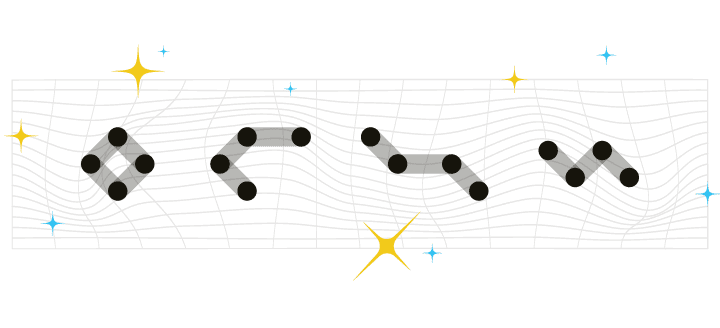Customer Loyalty Programs & How to Build One
Acquiring a new customer is anywhere from five to 25 times more expensive than retaining an existing customer. So, it’s important to do everything in your power to build customer loyalty to keep your customers engaged with your brand, ensuring they’ll come back again and again.
To do that, you should prioritize building a strong customer loyalty program that rewards customers for their longevity and frequency of purchases. Customers who participate in the top quartile of high-performing loyalty programs (those with the most usage and customer satisfaction) are 80% more likely to choose the brand over competitors and twice as likely to recommend the brand to others.
One great example of a strong customer loyalty program is Starbucks, which has 16 million active users in their rewards program, centered on its mobile app. Customers can use the app to earn “stars” with every purchase that can be redeemed for rewards such as free drinks, food, and products. Starbucks is able to personalize the rewards program with special offers—based on the products that customers have purchased in the past—to engage their customers even more. As a result, it’s been a huge success: Starbucks can attribute 40% of total sales to its loyalty program.
If you’re ready to build your own customer loyalty program, here are some guidelines for getting started.
Integrate Your Customer Data
To understand which customers are worth targeting for a customer loyalty program, you need a system for analyzing existing customer behavior and other data. You should use a marketing automation solution that can centralize all of your customer data from different sources—including your CRM, web and app analytics, customer service tools, e-commerce solution, and more—to create a 360-degree customer view. That way, you’ll be able to easily analyze trends in behavior to identify your most valuable customer segments.
Use Zero-Party Data to Understand What Customers Want
As you start to design your customer loyalty program, it’s important to pay attention to what your customers want from your brand and what will make them stick around. Use surveys to solicit feedback on what they like most about your brand and what they’d like to see in a loyalty program. For example, earning points that can be exchanged for free products might be a good incentive for some customers, while others might see more value by getting special perks, such as free shipping or a “sneak peek” at new products before they officially launch. Make the most of user feedback to develop a customized program with different levels and different options, based on the marketing persona of each customer segment.
Build Your Customer Loyalty Program
For convenience, you can centralize your customer loyalty program within a branded app, where customers can track their loyalty points right where they shop. If your brand also has a brick-and-mortar presence, you can tie your rewards program to your customers’ phone numbers to easily connect to their account when they check out.
When customers use your app, you’ll be able to incentivize them to participate in your loyalty program by offering push notifications with limited time rewards, and in-app messages spotlighting new promotions for getting to a certain tier. You can also use cross-channel messaging, equipped with deep links or QR codes, to engage them on other marketing channels they use, such as email, SMS, and direct mail.
Offer Personalized Content and Rewards
To build a highly engaging program, your brand will need to do more than offer a generic rewards program for all of your customers. By using a cross-channel marketing platform that integrates all of your customer data, you can gain an in-depth understanding of what each customer values in your brand, and develop customized rewards that are unique to each individual.
For instance, if your brand is a bakery chain and a customer frequently purchases glazed donuts, you can send them a coupon for a free glazed donut when they buy a coffee (we’re lookin’ at you Dunkin’) or offer them a dozen free donuts for reaching a certain tier in your rewards program.
It’s important to tailor your program towards each customer’s unique priorities, so that reaching a new level of rewards will be meaningful to them. This may vary by audience. For example, 61% of Millennials said that they are likely to donate their loyalty rewards to charity, so it’s important to put options in place to help customers use their rewards according to their values, whether that’s incorporating charity donation options or making it simple to share rewards with friends.
Use Cross-Channel Integration for Customer Loyalty
Make sure that your customers can easily access your customer loyalty program and use their rewards across every marketing channel they engage with. That means your customers should not only receive push notifications and in-app messages about their loyalty program membership, but that messaging strategy should also be tied in with channels like email and SMS, as well as the in-store experience.
Customers should have multiple options for receiving and managing their rewards. By using a cross-channel marketing platform like Iterable, you can use their behavioral data to automatically customize your loyalty program on an individualized level. You’ll be able to use their purchase and interaction history to understand the products and services that interest them, so that you can provide personalized rewards based on what they value most. You’ll also be able to understand how they typically engage with your brand, allowing you to automatically optimize your messaging for the channels they use most frequently.
By building a loyalty program based on what your customers want and how they wish to interact with your brand, you’ll be able to keep them highly engaged in your program, encouraging an ongoing relationship that will provide value to both your customers and your brand.































